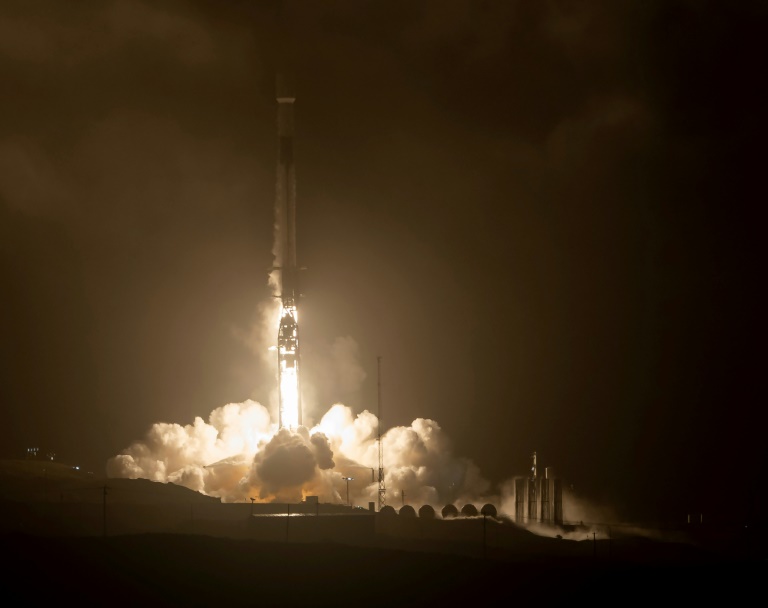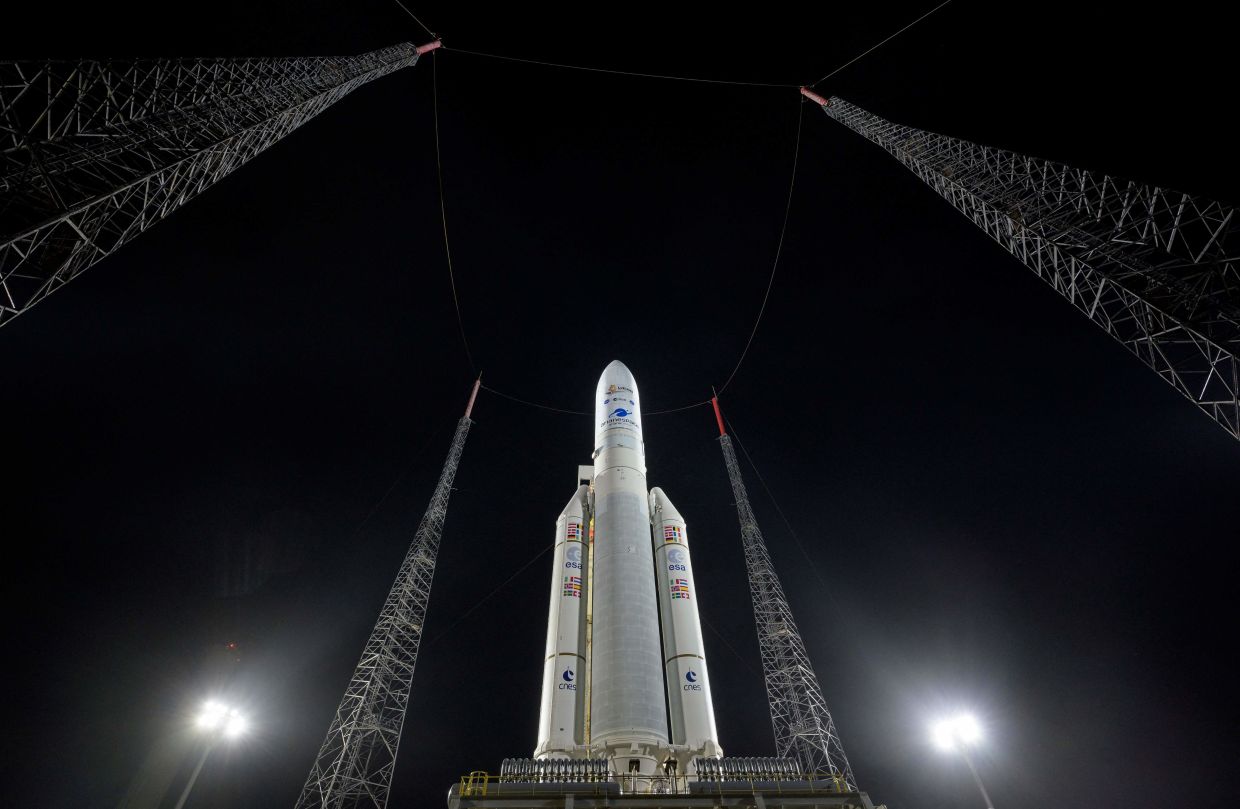2021 was a major year for humanity’s space ambitions, from the first powered flight on another globe by the Mars Ingenuity helicopter to the launch of the James Webb telescope, which will see into the earliest period of the Universe.

As space tourism finally came into its own, millionaires competed to be the first to reach the ultimate frontier, an all-civilian crew went into orbit, and Star Trek’s William Shatner waxed eloquent about what it meant to see the Earth from the cosmos.
Here are a few of the highlights.
Red Planet robot duo
NASA’s Perseverance Rover survived its “seven minutes of terror,” a time when the craft relies on its automated systems for descent and landing, to touch down flawlessly on Mars’ Jezero Crater in February.
Since then, the car-sized robot has been capturing images and digging for samples in order to complete its mission: discovering if ancient microbial life forms once existed on Mars.

In the 2030s, a rock sample return mission will be launched.
With its state-of-the-art instruments, “Percy,” as the helicopter is affectionately known, can also zap Martian rock and chemically analyze the vapor.
Percy is accompanied by Ingenuity, a four-pound (two-kilogram) rotorcraft that made the first powered flight on another celestial world in April, just over a century after the Wright brothers accomplished the same feat on Earth, and has made many more since.
“Perseverance is sort of the flagship mission, it’s doing a long-term detailed investigation of this fascinating area of Mars,” Jonathan McDowall, an astronomer at the Harvard-Smithsonian Center for Astrophysics, told AFP.
By contrast, “Ingenuity, is one of these cute, small, cheap little technology demos that NASA can do so well,” he added.
Ingenuity’s findings might aid scientists in the development of Dragonfly, a planned thousand-pound drone copter that will be used to search for indications of life on Saturn’s moon Titan in the mid-2030s.
Private spaceflight takes off
In 2001, an American millionaire became the world’s first space tourist, but it took another 20 years for private space flight to become a reality.
Richard Branson, the creator of Virgin Galactic, competed against Jeff Bezos of Blue Origin for the title of first non-professional astronaut to perform a suborbital voyage in July.
While the British tycoon prevailed by a few days, Blue Origin surged ahead, operating three additional flights with paying customers and celebrity passengers.
SpaceX, led by Elon Musk, entered the competition in September with Inspiration 4, a three-day orbital flight around the Earth with an all-civilian crew.
“It’s really exciting that finally, after so long this stuff is finally happening,” said space industry analyst Laura Seward Forczyk, author of the forthcoming book “Becoming Off-Worldly,” intended to prepare future space travelers.
But it was William Shatner, who played the swashbuckling Captain Kirk on the 1960s TV series “Star Trek,” who stole the show with a moving account of his experience.
“What you’re looking down on is Mother Earth, and it needs protecting,” he told reporters.
In 2021, a Russian crew shot the first feature film in orbit aboard the International Space Station (ISS), and Japanese visitors took a Russian rocket to the station.
On December 11, a record 19 humans were in space for a few minutes when Blue Origin launched its third crewed mission, the Japanese team joined the ISS’s regular crew, and Chinese taikonauts were in position on their station.
The spectacle of affluent elites gallivanting across space hasn’t gone down well with everyone, and the budding space tourism industry has sparked a reaction from some who argue that there are more serious concerns to address here on Earth, such as climate change.
Globalization of space
During the Cold War, the United States and the former Soviet Union controlled space.
China, India, and other countries are progressively exercising their space flying muscles, in addition to the commercial sector’s explosive growth, which is putting up satellites at a dizzying rate.
China’s Tiangong (Palace in the Sky) space station, the country’s first long-term outpost, was launched in April, and its first Mars rover, Zhurong, arrived in May, making it the first country to do so.
“In the past 20 years since China finally decided to go big on space, they’ve been in catch up mode,” said McDowall. “And now they’re kind of there, and they’re starting to do things that the US hasn’t done.”
In February, the United Arab Emirates sent a probe into Martian orbit, becoming the first Arab country and the sixth worldwide to do so.
Meanwhile, Russia launched a missile at one of its own satellites, becoming the fourth country to launch a missile at a spacecraft from the ground, reigniting fears about the developing space weapons race.
Washington chastised Moscow for its “reckless” test, which resulted in over 1,500 pieces of massive orbital debris, posing a threat to low-earth-orbit missions like the International Space Station.
Coming soon
The James Webb Space Telescope, a $10 billion marvel that will utilize infrared technology to peek back 13 billion years in time, was launched at the end of the year.
“It’s arguably the most expensive, single scientific platform ever created,” said Casey Drier, chief advocate of the Planetary Society.
“To push the boundaries of our knowledge about the cosmos, we had to build something capable of accessing that ancient past,” he added.
In a few of weeks, it will reach Lagrange Point 2, a space landmark a million miles from Earth, and then gradually power up and calibrate its systems before being live in June.
The launch of Artemis 1 — when NASA’s massive Space Launch System (SLS) will deliver the Orion spacecraft to the Moon and back in preparation for America’s return with humans later this decade — will also take place next year.
NASA intends to construct lunar homes and use what it learns there to future expeditions to Mars in the 2030s.
Observers are delighted that Joe Biden has continued the program started by former President Donald Trump, even if he hasn’t been as outspoken in his support.
Finally, NASA’s DART probe will collide with an asteroid sometime next fall, throwing it off track.
As shown in Netflix’s new smash film “Don’t Look Up,” the proof-of-concept test is a dry run in case mankind ever has to stop a big space asteroid from wiping out life on Earth.
With additional report: mb
Image sources: thestar, thebangkokpost and geo






